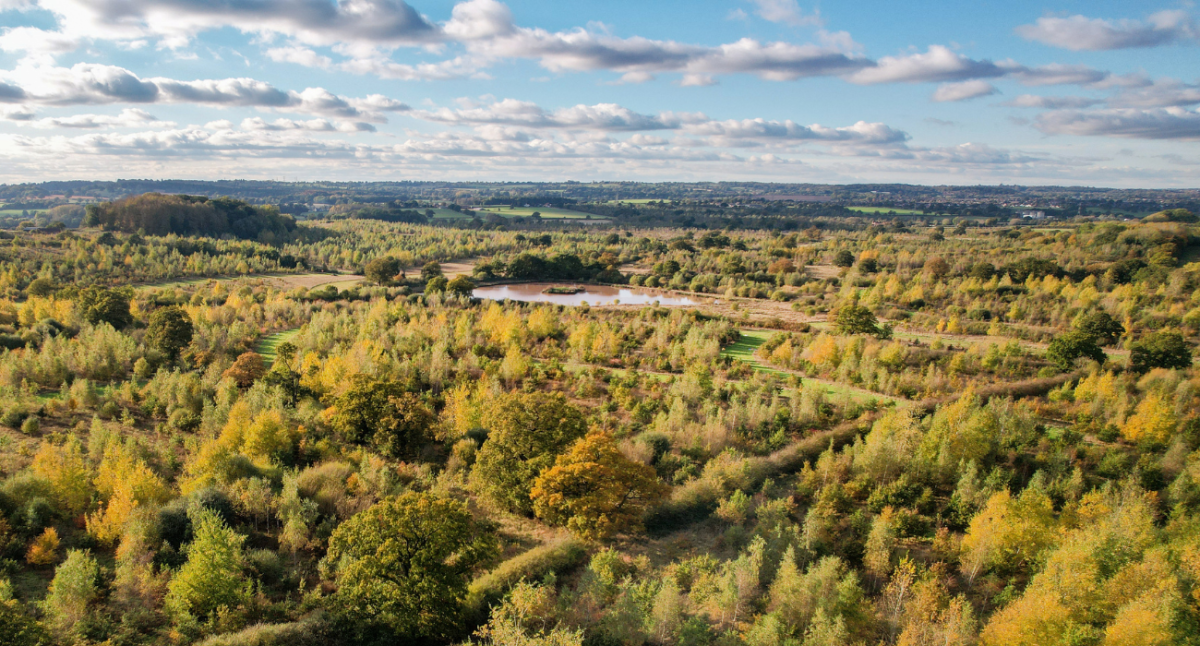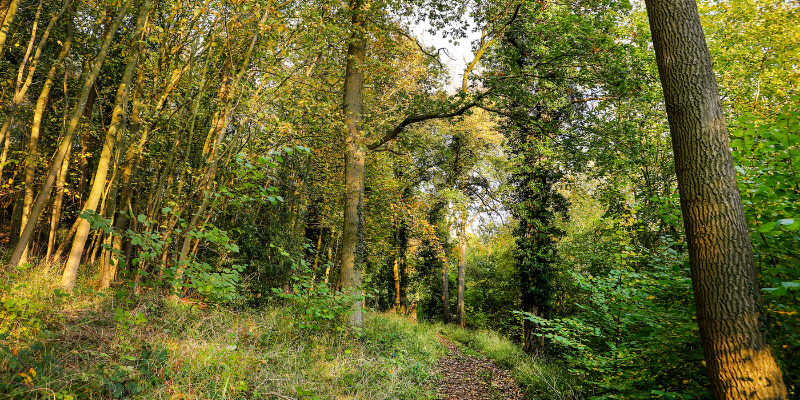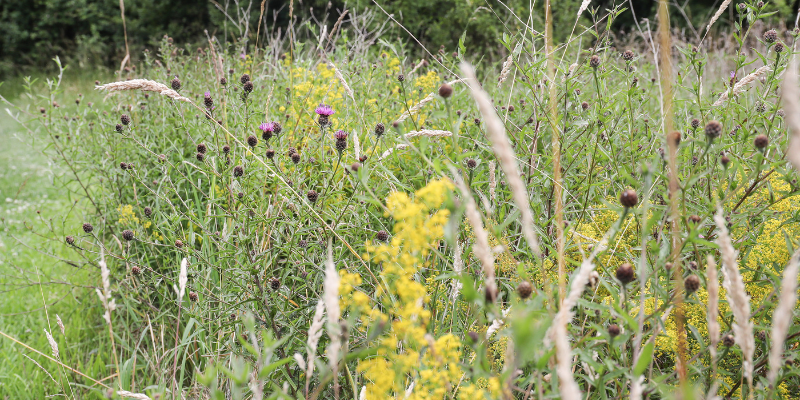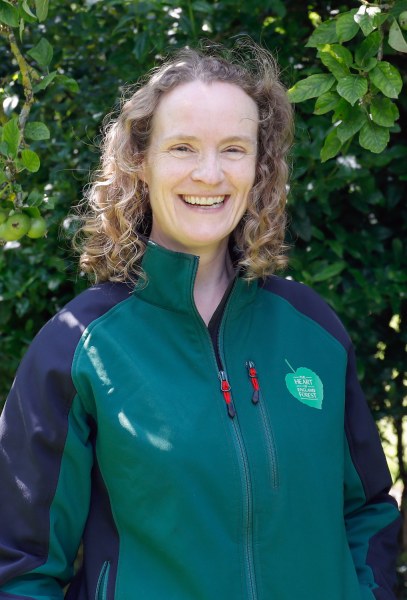
The Heart of England Forest focuses on the State of Nature 2023
The State of Nature report gives a critical outlook on the future of wildlife and ecosystems in the UK. It is more important now than ever to continue our tireless efforts to restore and conserve wildlife and biodiversity here in the Forest.
Statistics from the State of Nature report
-
Almost 1,500 (1 in 6) UK native species of plants and animals are threatened with extinction.
-
Most of the important habitats for UK nature - including woodland, wetlands and wildflower meadows - are in poor condition.
-
43% of bird species are at risk of localised extinction in Britain.
-
On average, species abundance has declined 19% since monitoring started, in the 1970’s.
As shocking as some of these statistics are, the State of Nature Report does acknowledge that the conservation sector is working collaboratively to help nature recover and to generate and evaluate data to produce assessments of nature’s status. The report uses some of the latest and best available evidence from monitoring schemes and biological recording centres. This evidence enables us to understand the effects of pressures on the natural environment and, equally importantly, how efforts to address these pressures through nature conservation and recovery can be effective in reversing decline.
Despite the statistics seemingly reprimanding the situation of UK wildlife, we remain positive about the work we are doing here at the Heart of England Forest to help in the battle of keeping wild spaces as a refuge for wildlife by creating, enhancing, improving, and restoring habitats, retrospectively helping to mitigate against species decline.

Taking a closer look at forestry and woodland
Woodlands are a crucial habitat for a multitude of plant and animal species. Trees outside of woodland areas are also key features, particularly for wildlife, as they offer additional foraging resources and facilitate movements across often intensively managed landscapes (both urban and rural). Currently woodland cover in the UK is approximately half native tree species and half non-native, particularly in conifer plantations. The importance of ancient woodlands should not be underestimated, and covering only 2.5% of the UK’s land area, they are a precious resource.
Last year, the woodland cover in the UK was 13% (3.24 million ha), up from 12% in 1998. This included woodland cover in England at about 10% with an additional 4% covered by trees outside woodland. The Heart of England Forest contributes significantly to woodland creation targets in the UK.
In 2022, there were 1.4 million ha of certified woodland across the UK, representing 44% of the total woodland area, up from 36% in 2001. The area of certified woodland has increased in Britain since 2004, but not in Northern Ireland. However, despite an increase in woodland cover, woodland wildlife is decreasing. This is largely due to woodland fragmentation, habitat degradation, and the lack of woodland management such as coppicing.*
By developing a programme of woodland management with conservation objectives, we can contribute to more woodlands being in favourable ecological condition and help prevent the decline in woodland wildlife.

Taking a closer look at grasslands and meadows
A grassland is any habitat where grasses and herbaceous plants are dominant in an area. Grasslands that are rich in wildflowers and biodiversity are of particular importance.
There has been a loss of 98% of our species-rich grasslands in just 100 years. The State of Nature Report recognises the importance of grassland restoration for conservation. This includes the use of a range of techniques and management strategies to improve habitat quality, such as sowing native grass and wildflower seeds, conservation grazing, invasive species control and scrub clearance. These all have positive impacts on a range of species, including birds, insects, and plants.
Volunteer surveyors undertaking botanical surveys across the British Isles have contributed more than 30 million records. This data has been compared to data collected as far back as the 1930s. It was found that more than half of these species have declined (54%), whilst only 15% increased.*
Management of grasslands with a greater focus on biodiversity should conserve and increase the floral diversity - this will subsequently benefit many other species in the Forest, particularly pollinating insects whose distribution has declined by 22% in England since 1970.
We aim to gain a greater understanding of the grasslands in the Forest, especially those grassland areas that have greater floristic diversity or the potential to become more diverse, by recording what plants are found in them. Many of these plants are positive indicator species for certain grassland types, and they can be used to learn what sort of grassland is present. These surveys inform any changes in management which is undertaken for the benefit of the environment, wildlife, and people for the future.

Taking a closer look at wetlands and inland waterbodies
Wetland habitats within the Forest include ponds, marsh, wet grassland, brooks, streams and rivers. However, wetlands are not limited to these; swamps, peatlands, and many more can be classified as wetlands.
In the UK, wetlands make-up 3% of land but support 10% of our biodiversity, so they are hugely important for our wildlife. Sadly, the UK has lost over 90% of wetlands in the last 100 years. The State of Nature report shares that from a large base of volunteer surveys, 753 terrestrial and freshwater species show a decline in average abundance of 19% in the UK. Common breeding birds declined by 14%, with farmland birds having suffered significantly worse, declining by 58% on average. However, it is not all distressing news as the State of Nature reports that rare or colonising bird species (those with fewer than 1000 pairs) have shown a strong increase in numbers.*
It is positive news for the species that reside in wetland habitats as newly restored wetlands do not take long to recover and recolonise with both plant and animal life, and even within a year, we can expect to see positive changes in the types of species found in the pools across the Forest.
We have an active programme of pond restoration and creation in the Forest, to improve the condition of existing ponds and increase our network of 150 ponds, extending the area of water available to wildlife.

Continuing to help the state of nature
The Heart of England Forest continues to contribute to the evidence base used to compile the State of Nature report by completing more than 100 wildlife surveys on an annual basis. If you’d like to take part in any of our biodiversity surveys, you can find out more information by signing up to our volunteer newsletter.

Support us
It is now more important than ever that we all do our part to ensure that we safeguard nature for the future. Your donations make a direct and positive impact on our wildlife Donate | Heart of England Forest:
£10 could plant, protect, and nurture 2 native broadleaf trees in the Forest.
£25 could buy 5 packets of wildflower seed to plant on our pollinator pathways that help our bees and wasps thrive.
£50 could fund 10 young people with special educational needs to spend a morning volunteering in our tree nursery.
£100 could help us provide survey training for two volunteers.



